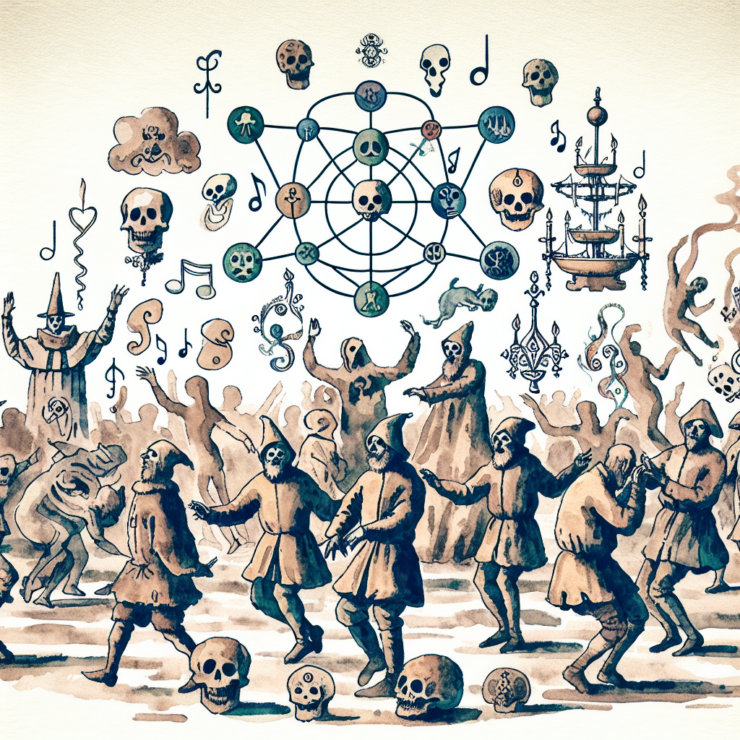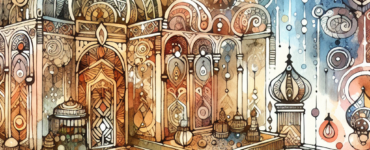Have you ever heard of a time when people danced uncontrollably, unable to stop for days or even weeks on end? Welcome to the phenomenon of the Dancing Plague of 1518, a bizarre chapter in history that took place in Strasbourg, Alsace (then part of the Holy Roman Empire). But what could cause such an uncontrollable and exhausting compulsion to dance?
In July 1518, Frau Troffea began to dance fervently in the streets of Strasbourg without any apparent reason, and, remarkably, her singular act became a contagious event1. Within a week, 34 others had joined, and by the end of the month, the count had risen to around 400 people. Historical documents from the time, including physician notes, cathedral sermons, local and regional chronicles, and even notes from the Strasbourg city council, describe the event with a combination of bewilderment and concern((https://www.history.com/news/what-was-the-dancing-plague-of-1518)).
Though it might sound like an amusing tale, the Dancing Plague was far from a joyous event. Many dancers suffered from exhaustion, heart attacks, or strokes, and some even died as a result of their non-stop dancing2. In an attempt to cure the afflicted, local authorities endorsed more dancing, under the belief that they would only recover if they danced continuously. Musicians were hired, and a wooden stage was constructed. This approach, however, only seemed to encourage more people to join((https://www.bbc.com/future/article/20161028-the-town-the-nearly-danced-itself-to-death)).
Theories about what caused this bizarre event have ranged from spiritual and supernatural reasons to more scientific explanations such as ergot poisoning, which can induce hallucinations and convulsions((https://bigthink.com/the-past/dancing-plague-middle-ages/ )). Ergot is a mold that grows on damp rye, and consuming contaminated bread could lead to ergotism, also known as St. Anthony’s fire3. However, this theory has been contested, as it’s unlikely that ergotism can explain the sustained and lively dancing that was reported((https://www.thelancet.com/article/S0140-6736(09)60386-X/fulltext )).
Another theory suggests mass hysteria (now known as mass psychogenic illness), possibly triggered by the hardships of famine and disease that the region was experiencing at the time. A collective stress response might have manifested physically through this peculiar and infectious dancing mania. Psychologist John Waller has posited that these outbreaks were stress-induced chorea which spread through social contagion among people who believed in a curse that made them dance((http://ergotism.info/en/john_waller_2009_07.htm )).
The Dancing Plague of 1518 remains one of history’s great mysteries. Still, it serves as a powerful reminder of the human psyche’s complexities and how communities react to stress and fear. It underscores the idea that, at times, the line between physical and psychological afflictions can blur, leading to extraordinary episodes in human history. Remember, extraordinary events often call for extraordinary explanations, pushing us to expand the horizons of our understanding. Let the curiosity sparked by such mysteries inspire us to never stop questioning and exploring the world around us.
- https://www.britannica.com/event/dancing-plague-of-1518 [↩]
- https://www.ripleys.com/stories/the-dance-plague-that-struck-strasbourg [↩]
- https://www.sciencedirect.com/topics/pharmacology-toxicology-and-pharmaceutical-science/ergotism#:~:text=Ergotism%20is%20caused%20by%20Claviceps,fire)%20and%20it%20produces%20alkaloids. [↩]




































Add comment